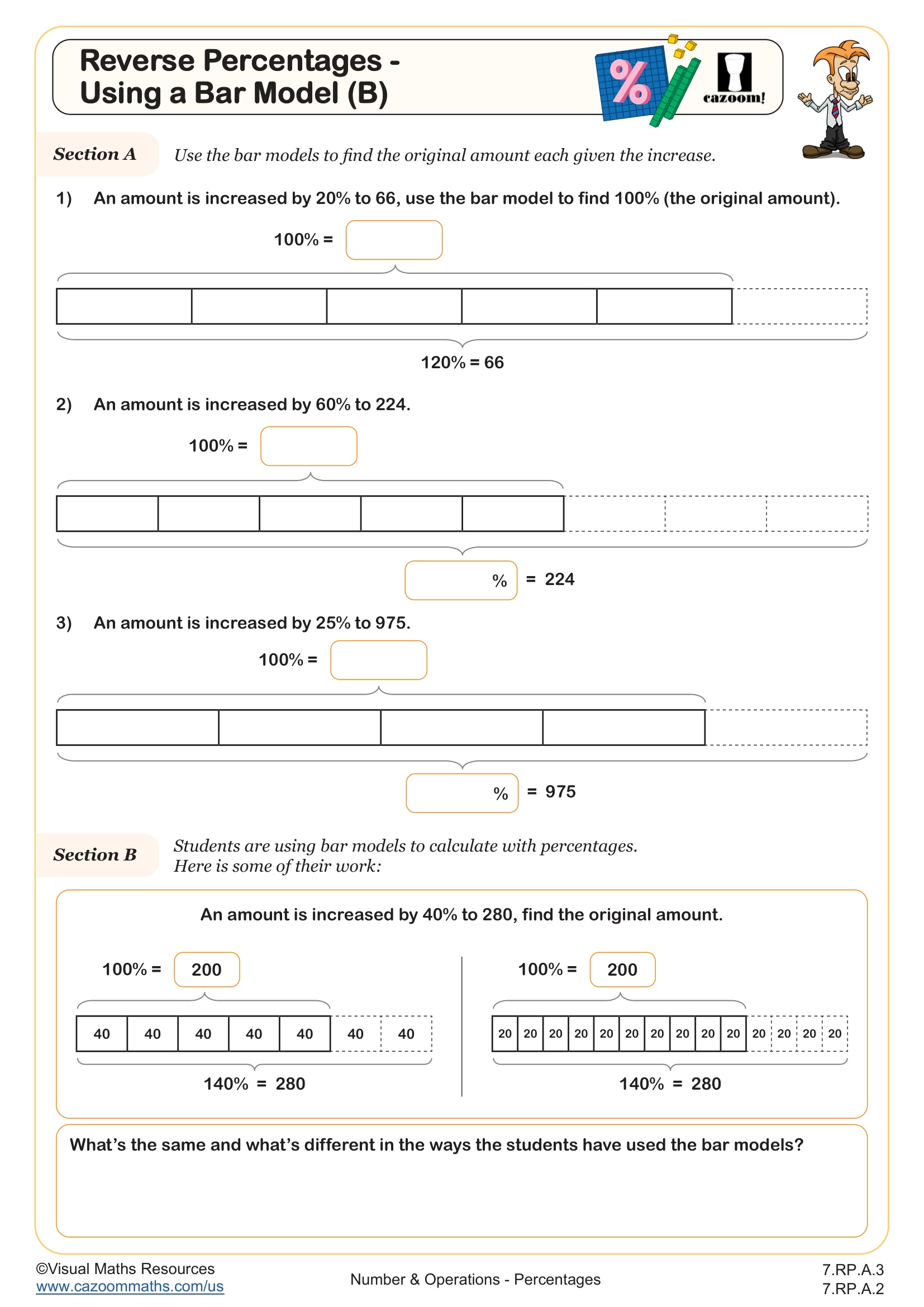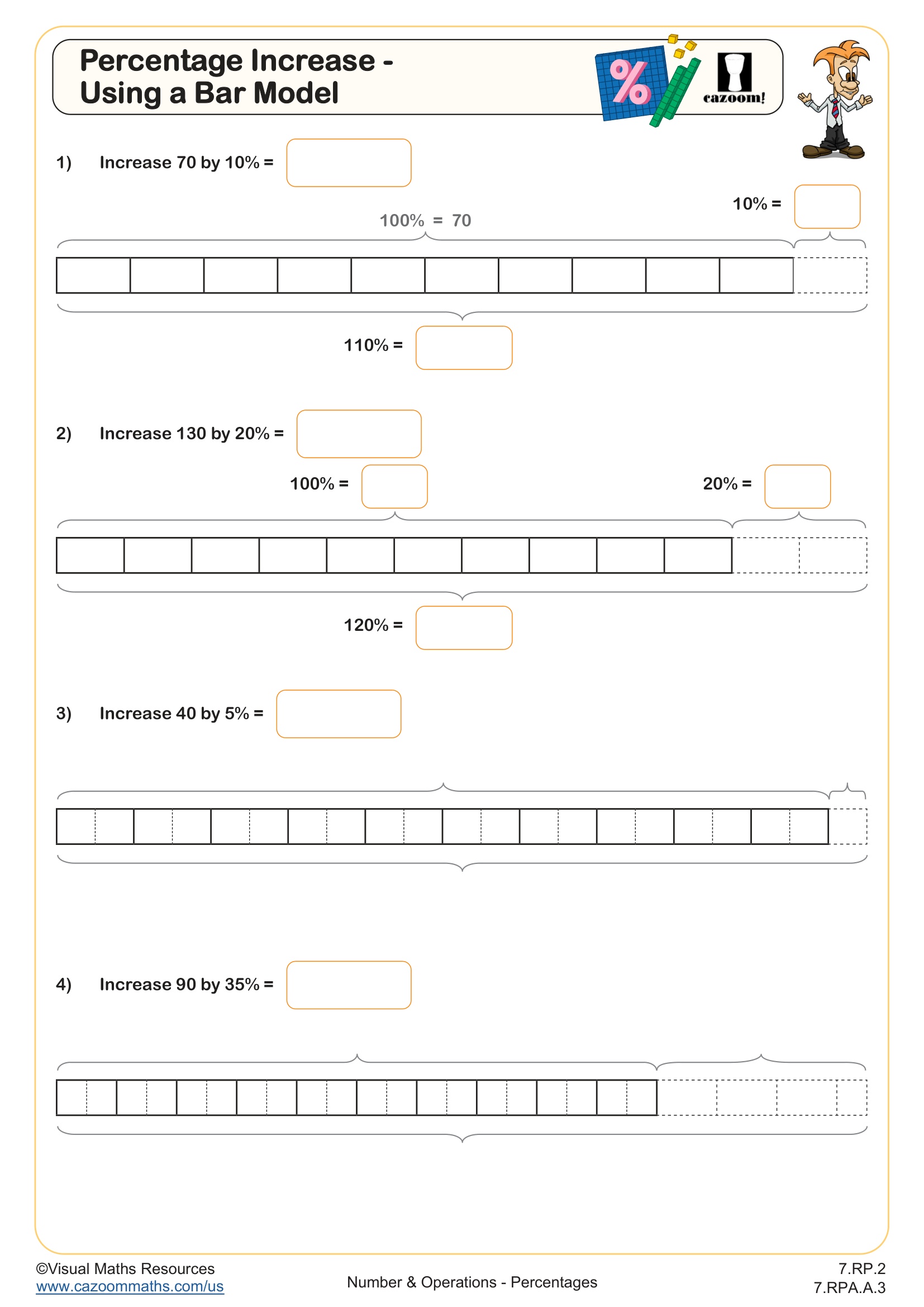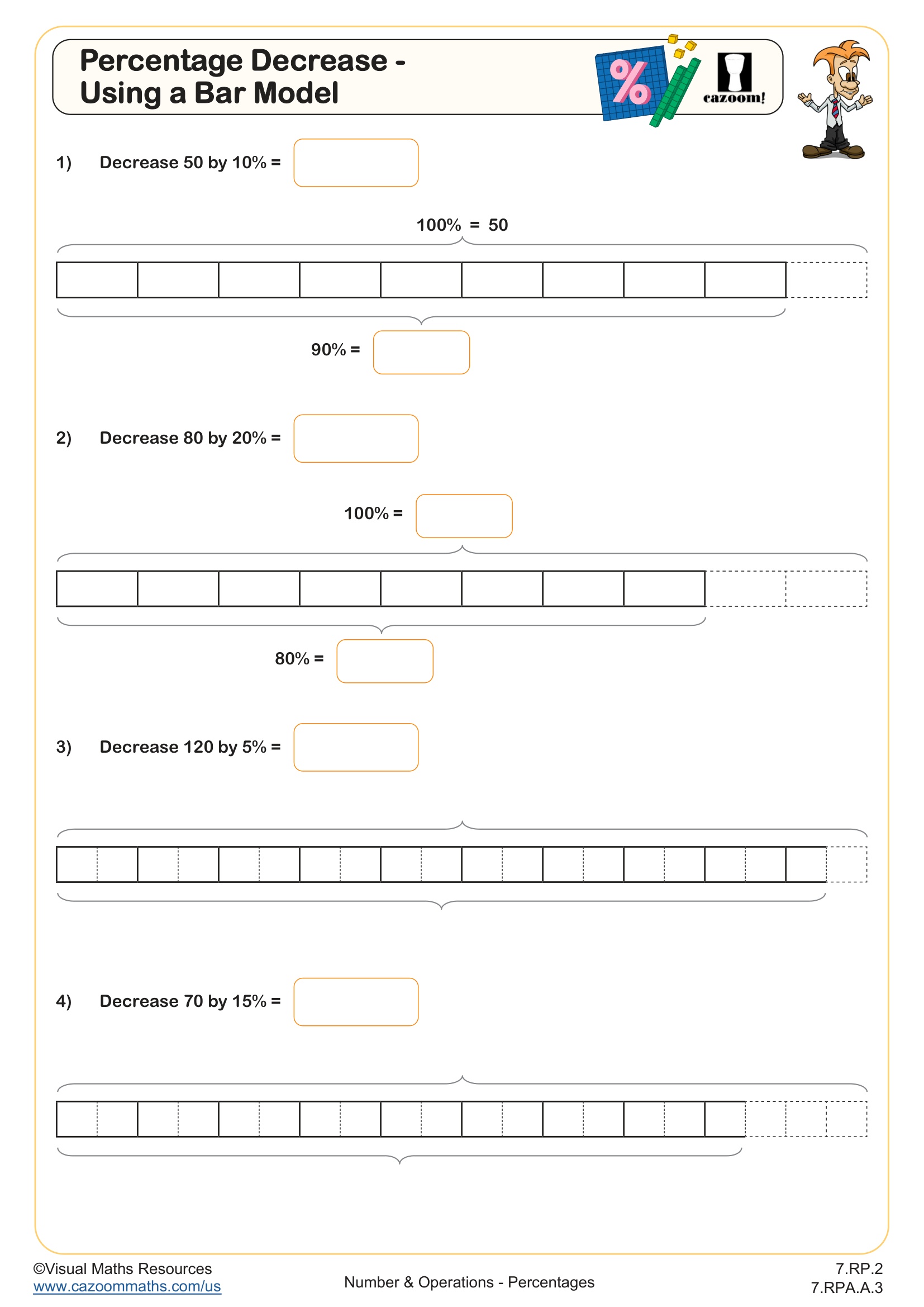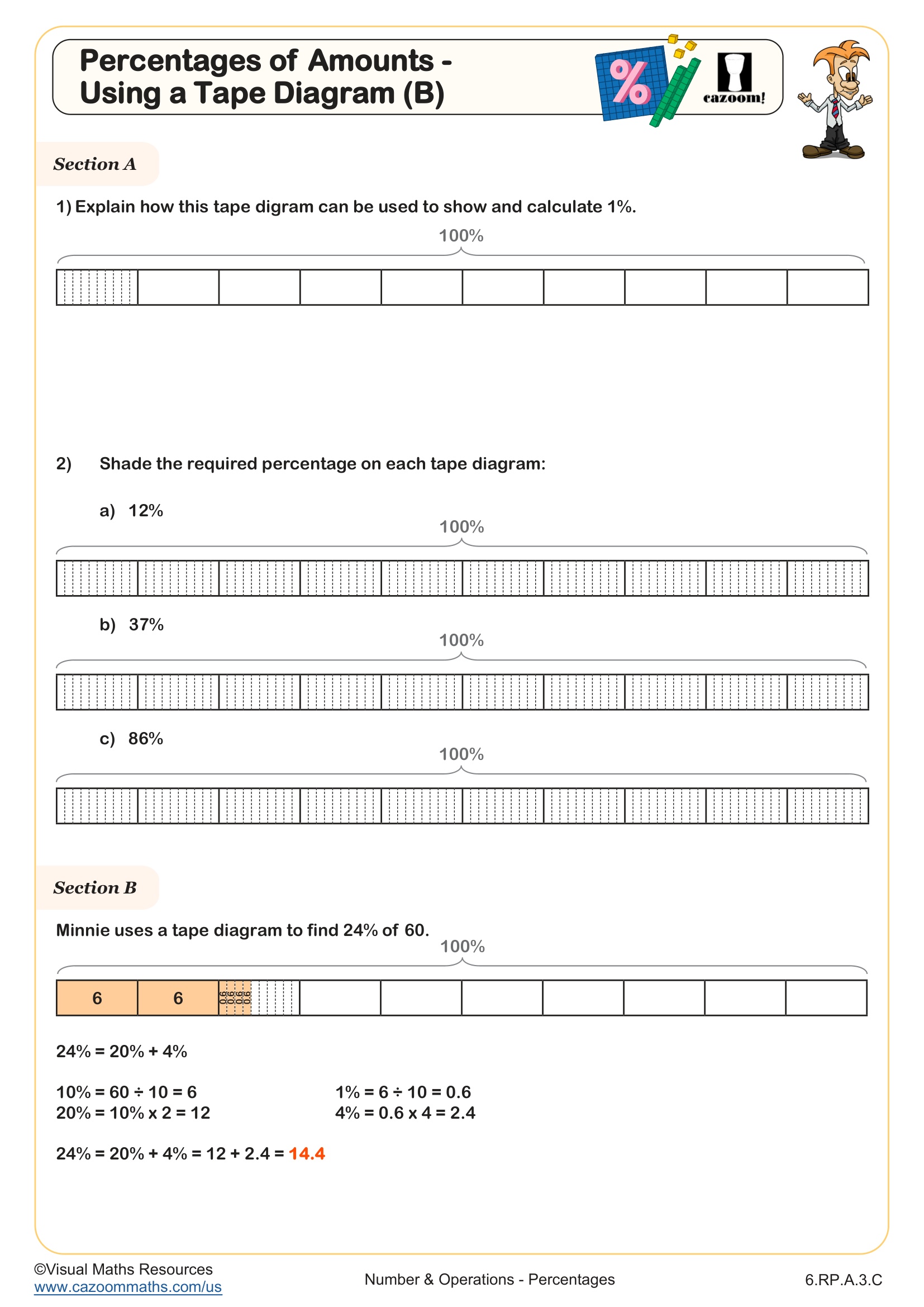Back to:
Reverse Percentages - Using a Bar Model (B) WORKSHEET
Suitable for Grades: 7th Grade
CCSS: 7.RP.A.2, 7.RP.A.3
CCSS Description: Recognize and represent proportional relationships between quantities. a. Decide whether two quantities are in a proportional relationship, e.g., by testing for equivalent ratios in a table or graphing on a coordinate plane and observing whether the graph is a straight line through the origin. b. Identify the constant of proportionality (unit rate) in tables, graphs, equations, diagrams, and verbal descriptions of proportional relationships. c. Represent proportional relationships by equations. For example, if total cost t is proportional to the number n of items purchased at a constant price p, the relationship between the total cost and the number of items can be expressed as t = pn. d. Explain what a point (x, y) on the graph of a proportional relationship means in terms of the situation, with special attention to the points (0, 0) and (1, r) where r is the unit rate.
Use proportional relationships to solve multistep ratio and percent problems, including simple interest, tax, markups and markdowns, gratuities and commissions, fees, percent increase and decrease, and percent error.
Use proportional relationships to solve multistep ratio and percent problems, including simple interest, tax, markups and markdowns, gratuities and commissions, fees, percent increase and decrease, and percent error.
Reverse Percentages - Using a Bar Model (B) WORKSHEET DESCRIPTION
This worksheet provides an excellent introduction to finding the original amount when it has been subjected to a percentage increase. Bar models provide a visual tool for understanding percentages and help bridge the gap between concrete, pictorial, and abstract concepts.
All percentage increases are multiples of 5% and the different sections are structured with a decreasing level of scaffolding.
Section B provides an opportunity for students to articulate their understanding as they discuss what is the same and what's different between two different uses of the bar model for finding 100% after a 40% increase.




